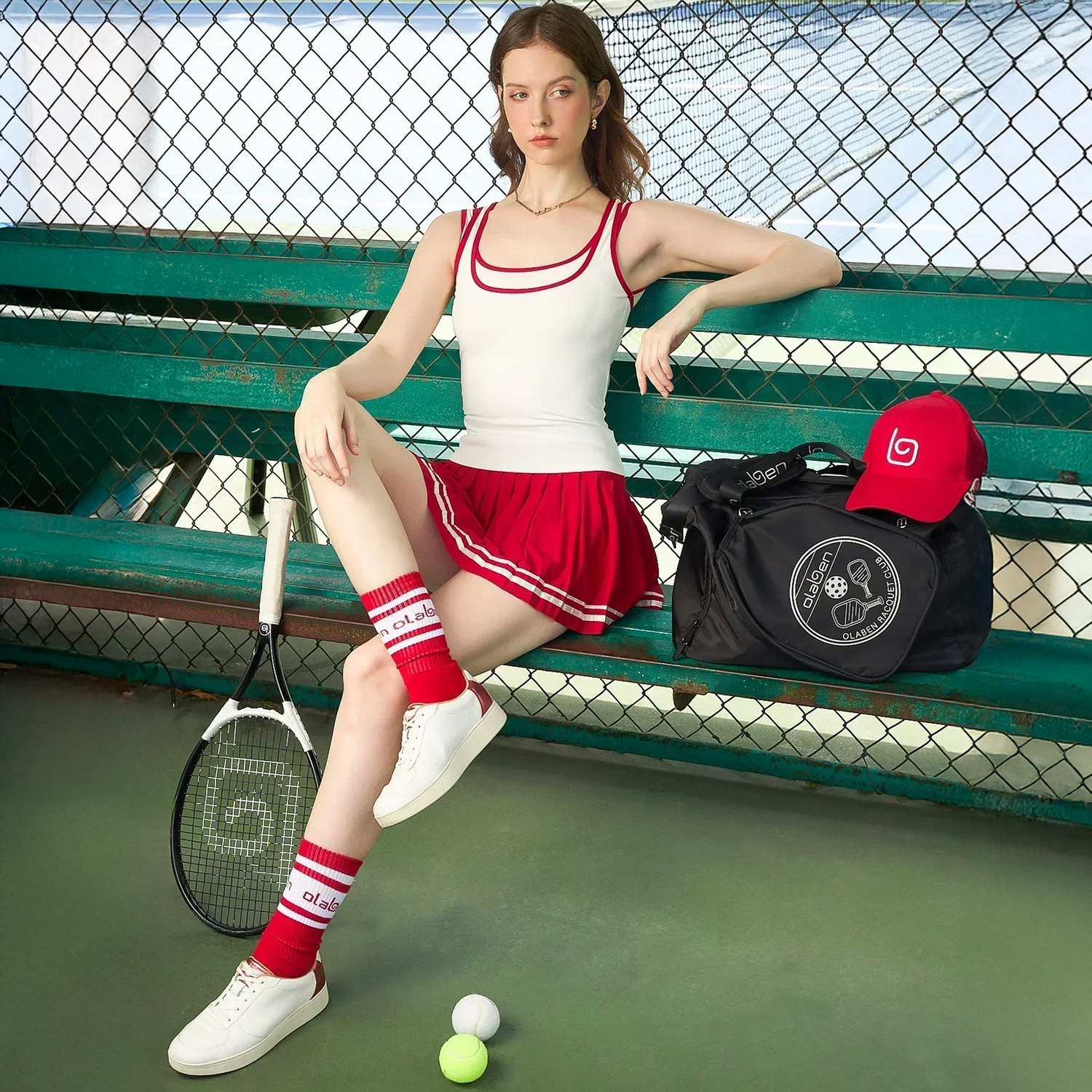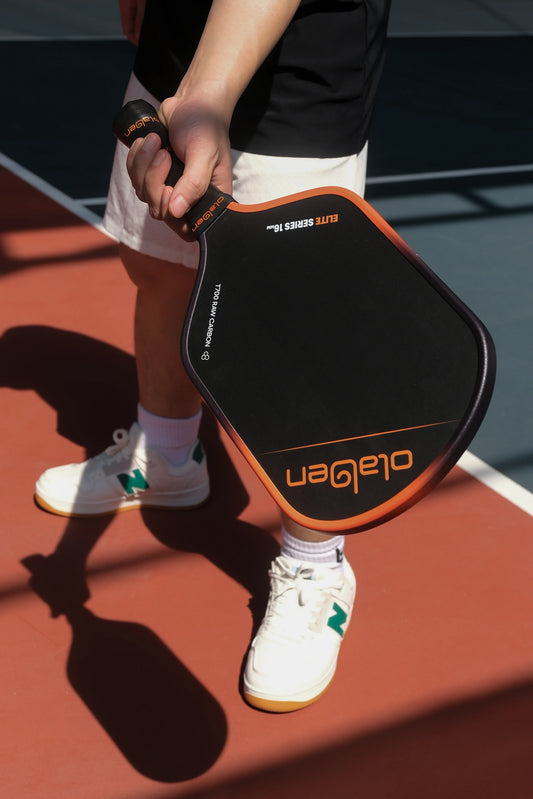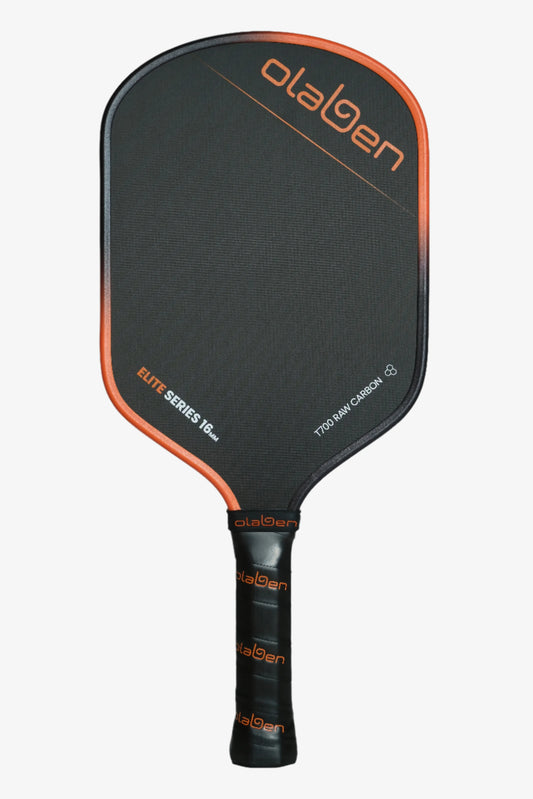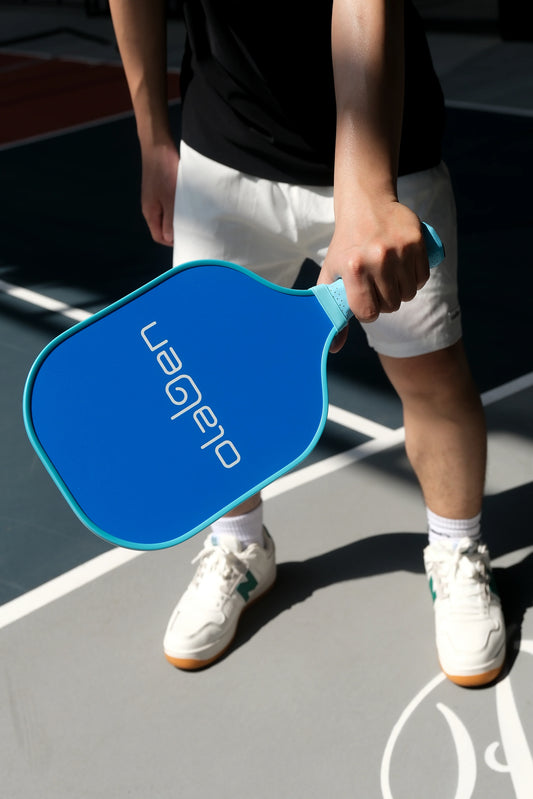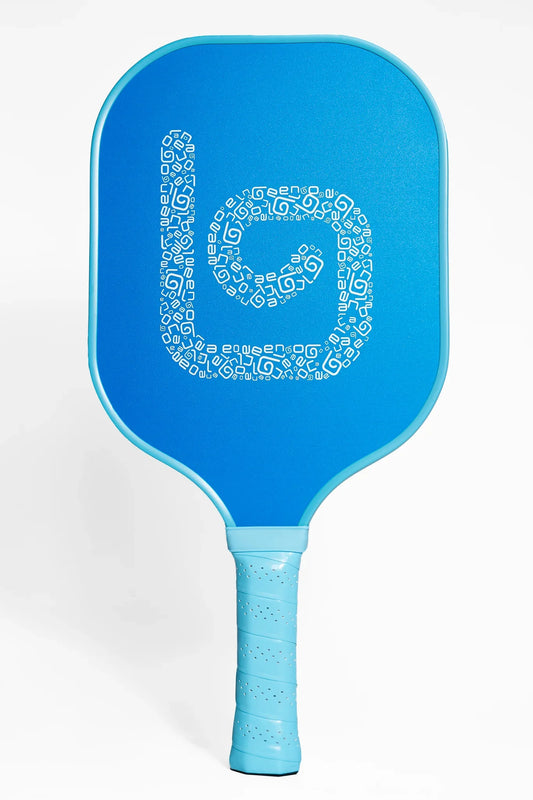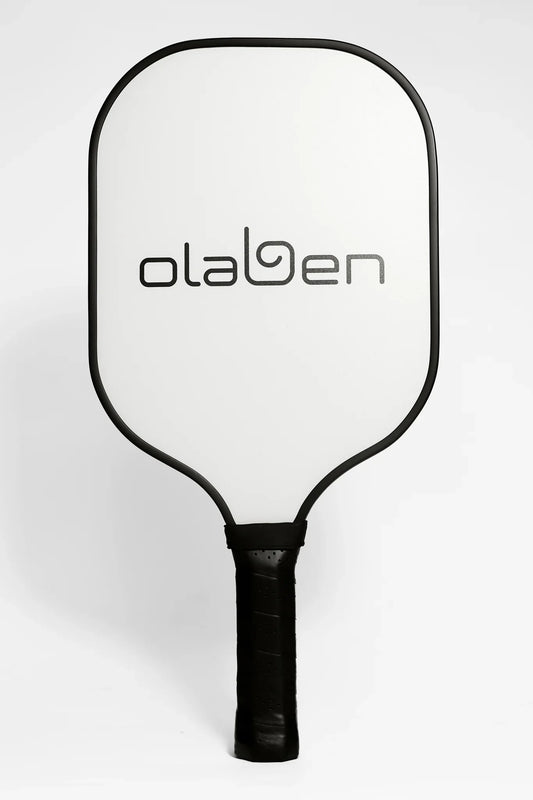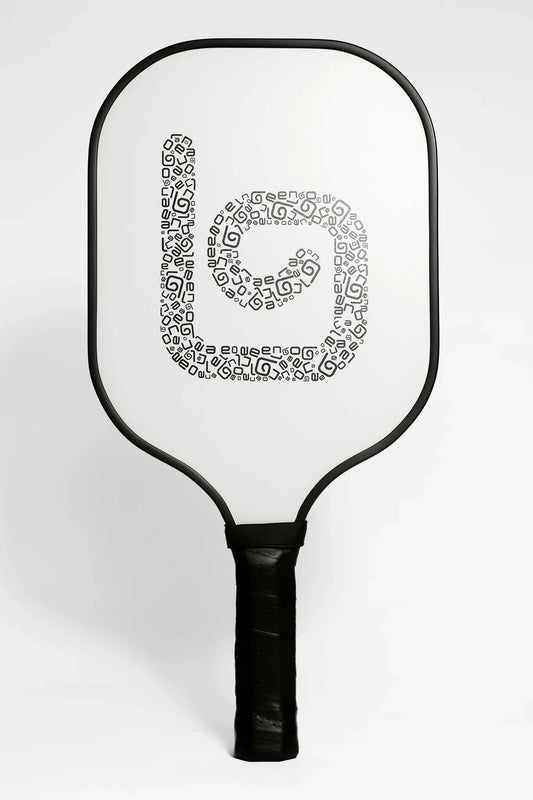Pickleball is a sport that combines elements of tennis, badminton, and table tennis, and it’s becoming increasingly popular in the world. To play well, players need to master the pickleball fundamental techniques such as the Dink, Forehand, Serve, Groundstroke, and Volley, along with more advanced skills like the Backspin and Block Shot. In this article, Olaben will guide you through each technique, how to perform them, and key points to remember.
1. Pickleball Dink Technique
The Dink is considered the “signature” shot in pickleball—a soft shot that travels low over the net and lands in the opponent’s Non-Volley Zone (NVZ).
How to execute:
- Step 1: Open the paddle slightly and lower it smoothly, without flicking your wrist.
- Step 2: Use your whole arm to push the ball, combining with a small knee bend to guide the ball over the net.
Tips: Keep a firm grip, use your arm and shoulder for control, and keep the ball as low as possible.
Common mistakes:
- Excessive wrist flicking → loss of control.
- Bending the elbow instead of keeping it extended → ball travels too far.
- Swinging too high → gives the opponent a chance to smash.

2. Pickleball Forehand Technique
The Forehand is a basic shot, used when the ball comes to your dominant side. It helps control power and direction, while creating strong attacking opportunities.
Steps:
- Step 1: Rotate toward your dominant side, take the paddle back, and step forward with your opposite foot.
- Step 2: Rotate your body, swing fully, and hit cross-court or down the line.
Tips:
- Don’t stop your swing at contact.
- Tilt the paddle slightly for spin.
- Keep the ball moderately high—just enough to clear the net and land accurately.
3. Serving Technique
The Serve starts every rally and often determines the advantage.
Key rules:
- Stand behind the baseline, without touching it.
- Toss the ball low, making contact below the waist.
- Use a flat paddle face, aiming diagonally across the court.
Types of Serves:
- Basic Serve: Light, easy to control.
- Topspin Serve: Adds spin, making the ball drop deeper.
- Slice Serve: Creates sidespin, making the ball unpredictable.
- Power Serve: Strong and fast, to pressure the opponent.

4. Groundstroke Technique
A Groundstroke is a shot taken after the ball bounces once. It’s the most common stroke in pickleball, especially from mid-court or baseline, helping players control the rally and create opportunities to move forward.
Forehand Groundstroke
How to execute:
- Preparation: Open stance, opposite foot facing the ball.
- Backswing: Take paddle back and rotate shoulders.
- Contact: Hit at waist level, slightly in front.
- Follow-through: Swing upward naturally.
Advantages: Easy to generate power and spin; precise directional control.
Backhand Groundstroke
How to execute:
- Preparation: Rotate shoulders and hips toward the ball.
- Backswing: Pull paddle back with one or both hands.
- Contact: Hit in front of the body, keeping paddle stable.
- Follow-through: Swing naturally, ending at shoulder height.
Advantages: Covers the weak side; adds variety to your play.
Common Types of Groundstrokes:
- Topspin Groundstroke: Swing upward to create topspin—ball arcs high but drops quickly.
-
- Safe, difficult for opponents when bouncing high.
- Best for deep baseline attacks.
- Slice Groundstroke: Swing downward with an open paddle face for backspin.
-
- Slows pace, keeps ball low.
- Useful for disrupting fast rallies or pulling opponents forward.
- Flat Groundstroke: Straight, powerful shot with little spin.
-
- Fast and surprising.
- Risky—less control, higher chance of going out.

5. Volley Technique
A Volley is hitting the ball before it bounces, usually near the Kitchen Line. It shortens opponent reaction time, applies pressure, and controls tempo.
How to perform a basic volley:
- Stance: Firm, feet apart, weight low.
- Paddle: Hold in front of chest, slightly open face.
- Contact: Push ball gently, don’t swing hard.
- Direction: Keep ball low to prevent opponent smashes.
Types of Volleys:
- Forehand Volley: Strong, controlled shot from dominant side.
- Backhand Volley: Essential for handling shots to the non-dominant side.
- Punch Volley: Quick, short “punch” to return fast balls.
- Drop Volley: Softens the shot, dropping it near the net to force opponent movement.
6. Backspin (Slice) Shot
A Backspin (Slice) puts reverse spin on the ball, making it travel slower, stay low, and bounce less.
Execution:
- Keep paddle firm, slightly open.
- Swing downward from high to low, contacting under the ball.
- Finish with a gentle “cut” motion, without excessive force.
Advantages:
- Slows rallies, disrupts opponent rhythm.
- Forces weak upward returns.
Common mistakes: Too much force (ball goes long), paddle too open (ball doesn’t clear net).
7. Block Shot
The Block Shot is a defensive move against powerful smashes. Instead of counterattacking, you absorb and redirect the ball safely.
How to execute:
- Stay ready, paddle in front of chest.
- When ball comes fast, don’t swing—just “block” at contact point.
- Slightly relax wrist/arm to absorb power and guide ball back.
When to use:
- Against fast smashes.
- At the net with limited reaction time.
- To reset the rally.
Benefits: Prevents losing points under pressure; transitions defense into offense.

8. Advanced Dink – Controlling with Consecutive Dinks
At an advanced level, consecutive dinks can dominate rallies and force opponents into errors.
Techniques:
- Keep ball low and close to the net.
- Use cross-court dinks to move opponents out of position.
- Mix short and deep dinks for unpredictability.
Strategy:
- Build mental pressure on opponents.
- Punish high returns with immediate smashes.
- Maintain advantage at the Kitchen Line.
Conclusion
To play pickleball effectively, start with basics like the Dink, Forehand, Serve, Groundstroke, and Volley. Then, progress to advanced skills such as the Backspin and Block Shot. Consistent practice, proper grip and stance, and smart movement strategies will help you improve quickly and gain the upper hand in matches.


